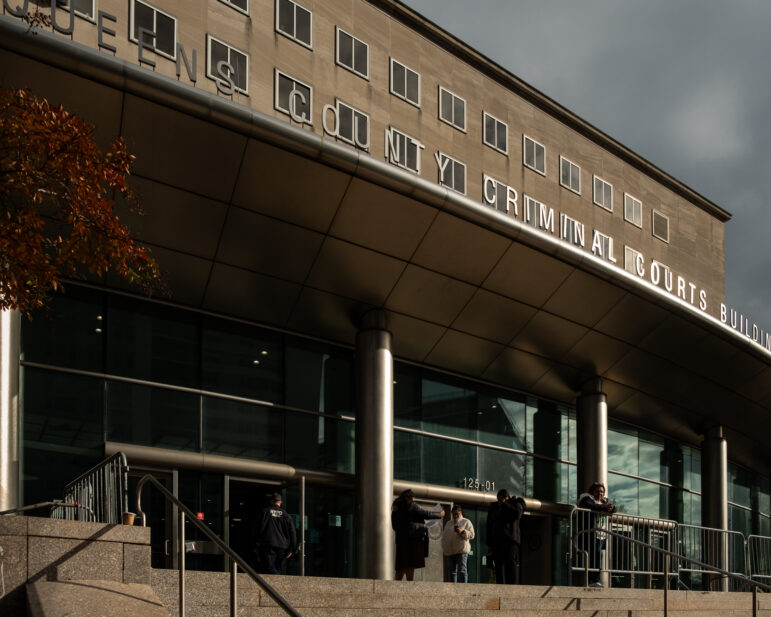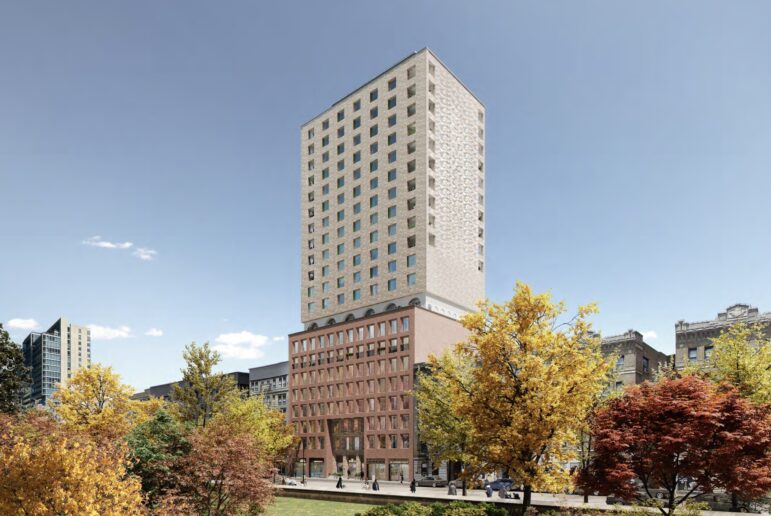On May 23, a coalition of nearly 100 housing groups kicks off a campaign that participants hope will strengthen rent protections and preserve the status of affordable buildings. In this exchange, two leaders of the campaign explain their goals – while the director of a housing group outside the coalition advocates a different approach to a similar end.
Sometimes the curtain of lies that substitutes for honest political conversation in America is lifted, and the truth appears. In Washington, the journalists who were stenographers for the Bush administration’s Iraq war plans woke up, and the whole country is becoming aware of just how misguided and criminal the war really is. It’s as if a tipping point has been reached, and the whole society is realizing what a catastrophe we’re in.
We’ve reached a similar moment in New York City on the question of what kind of city we’re going to have, and who will be able to live here.
This past October, Metropolitan Life Insurance sold Stuyvesant Town and Peter Cooper Village, containing 11,250 units, to Tishman Speyer for $5.4 billion – the largest housing transaction in American history. In the seven months since, the new owners have doubled and tripled rents of many apartments.
In December, investors put Starrett City on the block. Starrett is the Unites States’ largest federally subsidized apartment complex, home to nearly 12,000 poor and working-class New Yorkers. The price was similarly staggering – $1.3 billion, or $221,000 an apartment, in a community where the average annual income is around $22,000.
These sales changed the city. The sheer scale of these transactions highlighted the true extent of the threat to affordable housing. The shape of the crisis may vary according to one’s class, but it’s safe to say that for the first time in memory, middle-class, working-class and poor New Yorkers really are in the same boat.
The facts are well known, but let’s review a few salient ones before turning to the question of what strategy to use to turn the tide.
Over the past three comparable years for which we (or anybody) have data, 2002-2005, the median income in New York City fell 6.3 percent to $40,000. Over the same time median rent shot up by 8.3 percent to $900 per month. The number of apartments that rent for $1,000 or less fell by more than 150,000. At a time of unprecedented construction in New York City – spurred partly by Mayor Bloomberg’s plan to build or preserve 165,000 affordable apartments – the number of rent-regulated apartments in New York City actually fell by nearly 15,000 units.
Over the next 10 years – even after the mayor has finished building his new units – we will have actually lost more than 300,000 apartments affordable to average working families.
So what do we do about it? The right-wing response – and it’s the dominant one even in New York City today in both parties – is that we can’t do anything. The market is just too strong.
We disagree. The solutions are obvious.
To begin, Albany can pass legislation to put all subsidized apartments – Mitchell-Lama and Section 8 – into rent stabilization. This would shelter tenants from double-digit rent increases that occur when their landlords cash out of the subsidy program. Next we can close loopholes that allow landlords to appeal to state regulators to remove buildings from rent stabilization. Most importantly, we need to eliminate high-rent vacancy decontrol – a sop to landlords that encourages tenant harassment and fuels speculation in the residential real estate market. If we don’t get rid of vacancy decontrol – a mechanism for allowing units to leave rent regulation – eventually there will be no affordable housing.
So here’s the plan.
This Wednesday, we’ll join 10,000 New Yorkers in a human chain around Stuyvesant Town and Peter Cooper Village to launch “New York Is Our Home,” a three-year drive to force rent stabilization back onto New York’s agenda. Convened by Housing Here and Now, New York Is Our Home brings together a broad coalition of more than 95 labor, tenant and community groups, along with the New York Central Labor Council and the Working Families Party.
Anyone who cares about their rent or the city’s future has a role to play. In 18 months we’ll go to the polls to vote for president and for state legislators in Albany. Governor Spitzer and the Democrats will try hard to undo 60 years of GOP dominance of the state Senate, as the Republicans fight as hard to retain control. In the Assembly there will be some hot general elections – and even hotter primaries.
New York Is Our Home will make repair of New York’s broken rent laws the litmus test for candidates for the state Senate and the Assembly. Today canvassers from the Working Families Party and ACORN will start going door to door in competitive legislative districts to educate voters about their representatives’ records on rent. The next 18 months will include local mobilizations, direct mail and Internet activism.
If you care about the housing crunch, we suggest you become a single-issue voter. Ask candidates running for office two questions: Do you support fixing the rent laws? If they say yes, then get specific and ask: Will you commit to passing every single item on the New York Is Our Home agenda in the first 100 days of the next legislative session?
Right after ’08 comes ’09 – dozens of City Council seats will be open and candidates will raise money from real estate to run for mayor. Don’t let them off with hazy promises to build more housing. Ask them about your apartment. What are they going to do to stop the rent hikes? How are they going to put this issue front and center until Albany fixes the rent laws? Make it clear that this is the question that matters for those of us who want to stay here.
A special word to the funding community: This is your fight too. For too long, progressive funders have shied away from the nuts and bolts of politics, preferring instead to make small grants to myriad organizations for loosely defined civic participation projects and small-scale grassroots organizing. The scale and scope of grants seem to ignore the sheer size of New York City, the cost of our media market, and the degree of resources and political wherewithal it takes to win.
This crisis didn’t happen overnight. Since the early 1990’s, the real estate industry consciously and openly invested in elected officials and public intellectuals to tear down the rent stabilization laws. Nothing short of a parallel effort on the side of tenants – similar in scope and scale – will have a prayer of winning this campaign.
The affordable housing crisis is redefining the lives of nearly every working- and middle-class New Yorker. Now we have a chance to redefine New York’s politics. Foundations, progressive donors and grassroots activists need to put their money and their time where their principles are while there’s still a chance to keep New York our home.
Dan Cantor is executive director of the Working Families Party, a member of the New York Is Our Home steering committee. Julie Miles is executive director of Housing Here and Now and campaign director for New York Is Our Home.







